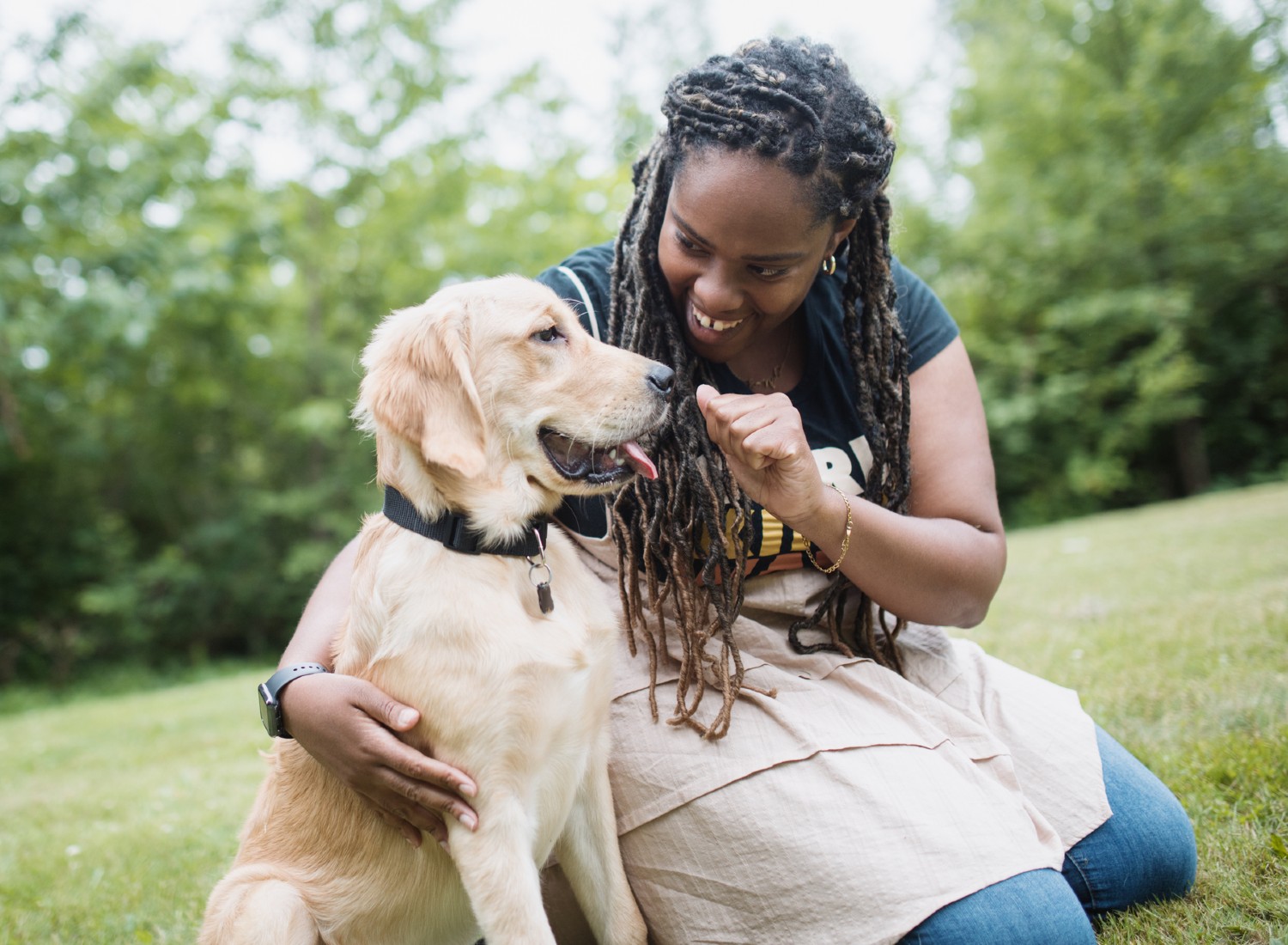How to Train a Deaf Dog: Tips, Tricks, and Resources

Recently adopted a deaf dog? Don’t worry, training a deaf dog is similar to training any other dog with a few modifications. In this blog post, we’ll share tips, tricks, and resources to help you effectively train your new furry friend. Strengthen the bond between you and your deaf dog with these helpful insights and guidance.
Together, you can overcome any challenges and create a loving and supportive environment. Adopting a deaf dog is a rewarding experience that will enrich your life and theirs. Embrace the opportunity to provide a loving home and a bright future for your new companion.
How Deaf Dogs Communicate
Before diving into training techniques, it’s important to understand how deaf dogs communicate. Just like humans, they rely heavily on visual cues and body language. They also have a heightened sense of smell and touch.
Deaf dogs may not respond to verbal commands or high-pitched sounds, but that doesn’t mean you can’t train them. In fact, many deaf dogs are just as intelligent and eager to please as their hearing counterparts.
Training Tips
Here are some helpful tips for training a deaf dog:
- Use hand signals: Instead of relying on verbal commands, use specific hand signals to communicate with your deaf dog. This can include simple gestures like pointing, thumbs-ups, or even creating your own unique signals.
- Use visual aids: Incorporate visual aids, such as flashcards or signs, to help your dog understand commands and behaviors.
- Be consistent: Consistency is key when training a deaf dog. Use the same hand signals and cues for each command and always reward good behavior.
- Keep training sessions short: Deaf dogs can become easily overwhelmed, so keep training sessions short (10-15 minutes) and end on a positive note.
- Use positive reinforcement: Positive reinforcement is the most effective way to train any dog, including deaf dogs. Reward good behavior with treats, praise, or playtime.
Additional Resources
In addition to these tips, there are also resources available to help you train your deaf dog:
- Professional trainers: Consider hiring a professional dog trainer who specializes in working with deaf dogs. They can provide personalized training plans and guidance.
- Online courses: There are many online resources and courses specifically designed for training deaf dogs. These can be a great option for those unable to attend in-person training sessions.
- Books and guides: There are also numerous books, guides, and manuals available that offer step-by-step instructions on training a deaf dog.
- Deaf dog communities: Join online forums or social media groups dedicated to deaf dogs. Here, you can connect with experienced owners who can share their insights and advice.
- Deaf dog organizations: Reach out to organizations that specialize in deaf dogs. They often provide resources, support, and even workshops or events focused on training and caring for deaf dogs.
- Mobile apps: Explore mobile applications that offer specific training exercises and techniques for deaf dogs. These apps can provide interactive and convenient tools to assist you in your training journey.
Remember, each dog is unique, so it’s important to find the resources that work best for you and your furry friend.
GPS Dog Fence
Another important consideration for pet owners of deaf dogs is their safety. Without the ability to hear, it’s crucial to have proper containment measures in place. A GPS dog fence is a great option for deaf dogs as it allows them to roam and explore freely while still remaining within a designated boundary.
These fences use advanced technology to create a virtual boundary around your property, and if your dog crosses that boundary, you’ll receive an alert on your phone. This type of fence is also beneficial for deaf dogs because it doesn’t rely on sound cues to keep them contained. Instead, they’re guided by vibrations or gentle shocks from their collar.
Final Note!
Training a deaf dog requires patience, consistency, and positive reinforcement. But with the right techniques and resources, it can be a rewarding experience for both you and your furry friend. Remember to always be understanding of your dog’s unique needs and abilities, and don’t be afraid to seek professional help if needed. With love, dedication, and proper training, your deaf dog can thrive just like any other pet.
Your Pet’s Best Interest, Always
At Pet Institute, we take pet care seriously. We're dedicated to transparency, impartiality, and the well-being of your pets in every article, review, and recommendation we provide. Our unwavering commitment to these principles ensures that you, our valued reader, always receive reliable and unbiased information. Let us be your trusted guide in the world of pet care and companionship.